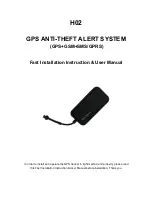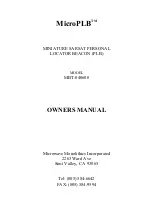
MAX-7 / NEO-7 / LEA-7 - Hardware Integration Manual
GPS.G7-HW-11006-1
Design
Page 15 of 55
3
Design
3.1
Design checklist
Designing-in a u-blox 7 module is easy, especially when based on a u-blox reference design. Nonetheless, it pays
to do a quick sanity check of the design. This section lists the most important items for a simple design check.
The design checklist can also help to avoid an unnecessary PCB respin and achieve the best possible
performance. Follow the design checklists when developing any u-blox 7 GPS/GNSS applications. This can
significantly reduce development time and costs.
3.1.1
Schematic checklist
If required, does your schematic allow for using different module variants? See the u-blox website
(www.u-blox.com) to compare the available features of u-blox 7 GPS/GNSS modules.
Plan the use of a second interface (Test points on UART, DDC or USB) for firmware updates or as a
service connector.
Power supply requirements
GPS/GNSS positioning modules require a stable power supply. In selecting a strategy to achieve a clean
and stable power supply, any resistance in the VCC supply line can negatively influence performance.
Consider the following points:
o
Wide power lines or even power planes are preferred.
o
Avoid resistive components in the power line (e.g. narrow power lines, coils, resistors, etc.).
o
Placing a filter or other source of resistance at VCC can create significantly longer acquisition
times.
o
For ground plane design, see section 3.4.3.
Are all power supplies (VCC, VDD_USB) within the specified range? (See data sheet MAX-7:[2] NEO-7:[1]
LEA-7:[3])
Compare the peak supply current consumption of your u-blox 7 module
with the specification of the
power supply. (See the data sheet
for more information.)
At the module input, use low ESR capacitors that can deliver the required current/charge for switching
from backup mode to normal operation.
Backup battery
Use of valid time and the GPS/GNSS orbit data at startup will improve the GPS/GNSS performance i.e.
enables Hotstarts, Warmstarts and the AssistNow Autonomous process as well as AssistNow Offline. To
make use of these features connect a battery to V_BCKP to continue supplying the backup domain in
case of power failure at VCC_IO.
If no backup supply voltage is available, connect the
V_BCKP
pin to
VCC_IO
(or to VCC if not avaiable).
















































